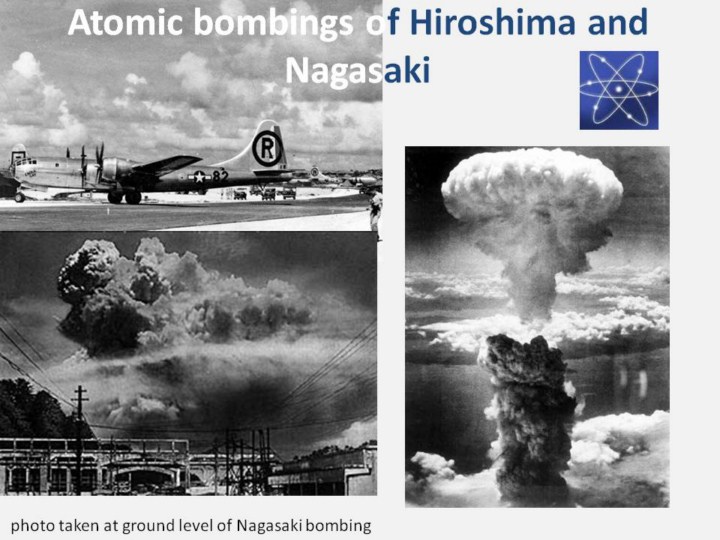| front |1 |2 |3 |4 |5 |6 |7 |8 |9 |10 |11 |12 |13 |14 |15 |16 |17 |18 |19 |20 |21 |22 |23 |24 |25 |26 |27 |28 |29 |30 |31 |32 |33 |34 |35 |36 |37 |38 |39 |40 |41 |42 |43 |44 |45 |46 |47 |48 |49 |50 |51 |52 |53| 54 |55 |56 |review |
 |
http://www.aviationexplorer.com/
On August 6, 1945, at 9:15 AM Tokyo time, a B-29 plane, the "Enola Gay" piloted by Paul W. Tibbets, dropped a uranium atomic bomb, code named "Little Boy" on Hiroshima, Japan's seventh largest city. In minutes, half of the city vanished. According to U.S. estimates, 60,000 to 70,000 people were killed or missing, 140,000 were injuried many more were made homeless as a result of the bomb. Deadly radiation reached over 100,000. In the blast, thousands died instantly. The city was unbelievably devastated. Of its 90,000 buildings, over 60,000 were demolished. Another bomb was assembled at Tinian Island on August 6. On August 8, Field Order No.17 issued from the 20th Air Force Headquarters on Guam called for its use the following day on either Kokura, the primary target, or Nagasaki, the secondary target. Three days after Hiroshima, the B-29 bomber, "Bockscar" piloted by Sweeney, reached the sky over Kokura on the morning of August 9 but abandoned the primary target because of smoke cover and changed course for Nagasaki. Nagasaki was an industrialized city with a natural harbor in Western Kuushu, Japan. At 11:02 a.m., this bomb, known as the "Fat Man" bomb, exploded over the north factory district at 1,800 feet above the city to achieve maximum blast effect. Buildings collapsed. Electrical systems were shorted. A wave of secondary fires resulted, adding to their holocaust. Flash burns from primary heat waves caused most of the casualties to inhabitants. Others were burned when their homes burst into flame. Flying debris caused many injuries. A fire storm of winds followed the blast at Hiroshima as air was drawn back to the center of the burning area. Trees were uprooted. The bomb took the lives of 42,000 persons and injured 40,000 more. It destroyed 39 percent of all the buildings standing in Nagasaki. According to U.S. estimates, 40,000 people were killed or never found as a result of the second bomb. Highly penetrating radiation from the nuclear explosion had a heavy casualty effect. Energy released by the explosion of this type of atomic bomb used over Nagasaki is roughly equivalent to the power generated by exploding 20,000 tons of TNT or 40 million pounds of TNT. It would fill two good sized cargo ships. In the early stages of the explosion, temperatures of tens of millions of degrees were produced. The light emitted is roughly ten times the brightness of the sun. During the explosion, various types of radiations such as gamma rays and alpha and beta particles eminate from the explosion. These radiative particles give the atomic bomb its greatest deadliness. They may last years or even centuries in dangerous amounts. Gamma radiation and neutrons caused thousands of cases of radiation sickness in Japan. First the blood was affected, and then the blood making organs were impaired including the bone marrow, the spleen and the lymph nodes. When radiation was severe, the organs of the body became necrotic within a few days, marking the victim for certain death within a short period of time. Surveys disclosed that severe radiation injury occurred to all exposed persons within a radius of one kilometer. Serious to moderate radiation injury occurred between one and two kilometers. Persons within two to four kilometers suffered slight radiation effects. What the bomb had produced was concentrated chaos, from which no city or nation could easily or rapidly recover. No significant repair or reconstruction was accomplished until months later. On September 2, the Japanese government, which had seemed ready to fight to the death, surrendered unconditionally. |